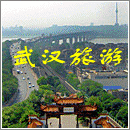 Locating in the joint of Changjiang and Hanjiang, Wuhan is famous as "a path to nine provinces". Here in Wuhan, seasons change in beautiful Jianghan Plain natural sights. Within the city, there are more than 100 lakes scattering over and over 10 mountains winding through. Wuhan is a origin of Jinchu Culture. Locating in the joint of Changjiang and Hanjiang, Wuhan is famous as "a path to nine provinces". Here in Wuhan, seasons change in beautiful Jianghan Plain natural sights. Within the city, there are more than 100 lakes scattering over and over 10 mountains winding through. Wuhan is a origin of Jinchu Culture.
Wuhan has a long history, splendid culture. It has many cultural sights, such as Yellow Crane Tower, Qingchuan Court, guqin Taiwan, Yue-ting, Panlongcheng, Eagle units and Zhongziqi tomb, the tomb of Mi Heng, Chu Graves, etc. Besides, as a well-known red and education base, the former site of the military junta Wuchang Uprising, "the central workshop of the peasant movement,” Zhongshan ship repair Education Center are all in this city. After the founding of the PRC, "Wuhan Yangtze River Bridge," is constructed. Now the bridge is not only a transportation hub on the Yangtze River but also a popular place for tourists. Other natural sights in Wuhan include Donghu National important scenic spot.
With its own tourism resources, Wuhan integrates the whole province's well-known tourism resources. It has developed a "one rare, two special, three refined" (i.e. the first one stands for Wudang mountain, the second one stands for the Chu culture, Qingjiang customs; the third one stands for the Three Gorges, Shennongjia, and the three ancient kingdoms). Those tourism projects, enable the tourists not only enjoy in the mountains, waters, but also experience in the folk customs and culture.
Wuhan has four distinct seasons and abundant rainfall. It is very hot in summer, therefore, it is famous as “stove” along Yangtze River. The burning sun will tan you and the cold weather in winter is also depressing. Therefore, the most appropriate season to travel to Wuhan is spring and autumn. March and April are the best months to have a cherry visit in Wuhan University and autumn is suitable to the Donghu Lake to grieve the excellent poet Qu Yuan.
|


